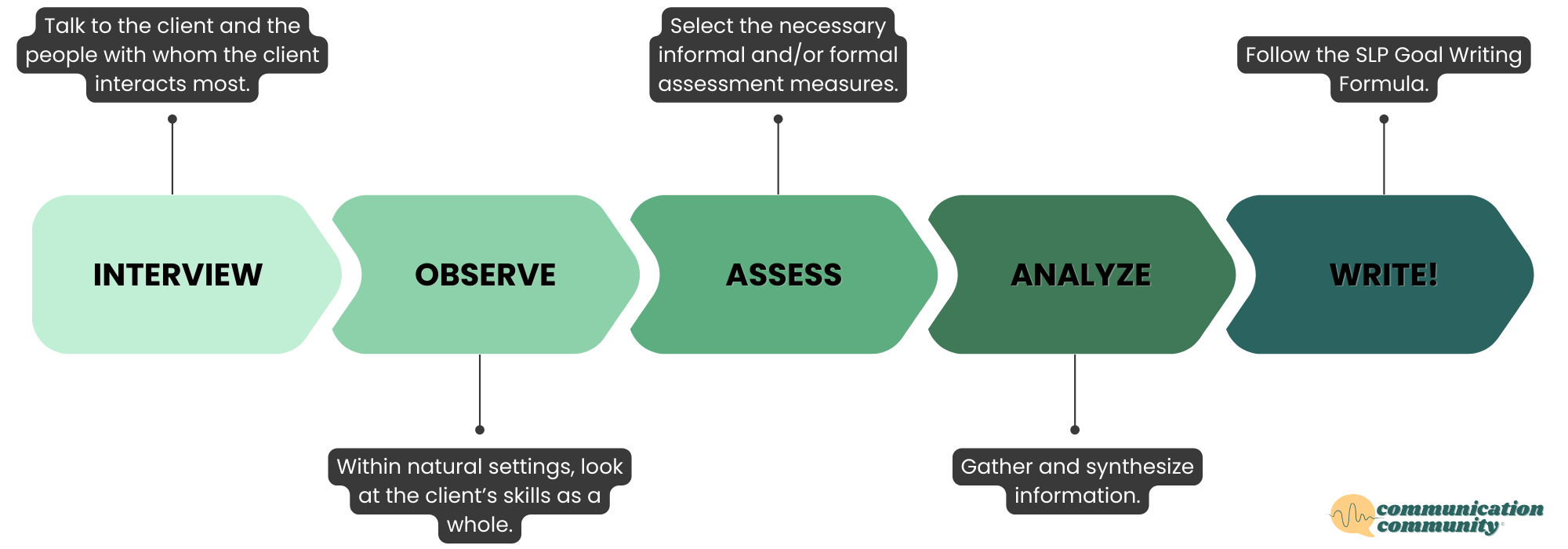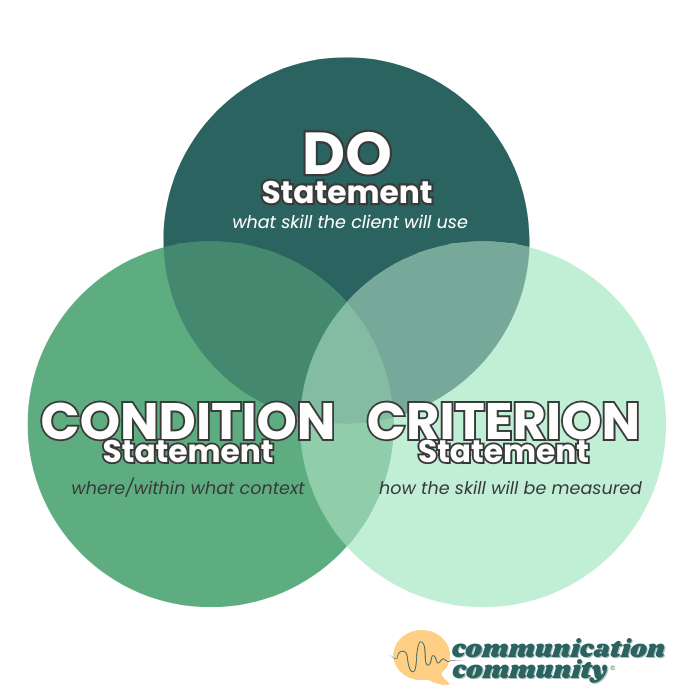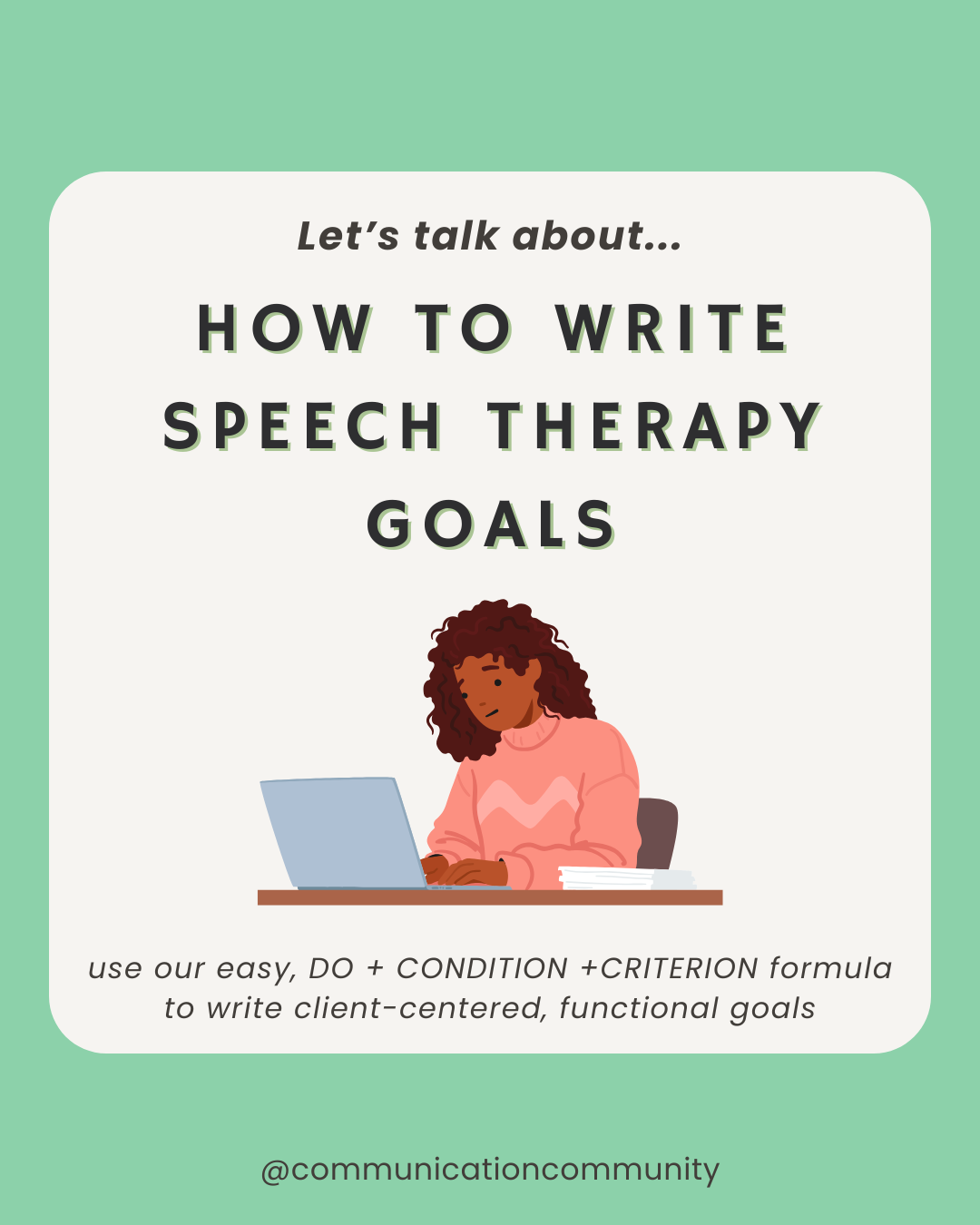Writing goals that target executive functioning can lead to more effective interventions. Continue reading to learn about how to write impactful executive functions goals and to check out our goal bank!
What is Executive Functioning?
Broadly speaking, executive functions include:
- Working Memory: Holding and manipulating information over short periods.
- Cognitive Flexibility: Adapting to changing situations or perspectives.
- Inhibitory Control: Suppressing impulses and distractions to stay focused.
Note: executive functions is an umbrella term for many cognitive processes. Many experts agree that the three areas mentioned above reflect the core aspects of executive functioning.
Why is Executive Functioning Important?
We use our executive functions throughout nearly all activities in daily life. From getting ready for school to interacting with others in homeroom to completing assignments to participating in extracurricular activities...aspects of executive functioning such as task initiation to goal achievement are involved.
Speech-language pathologists (SLPs), along with other related service providers, often target executive functioning skills within therapy.
Read more about executive functioning and its importance, here.
How to Write Executive Functions Goals
If you haven’t already, check out our article that outlines How to Write Speech Therapy Goals.
For the purpose of this article, we will discuss the process of goal writing related to executive functioning.
The first step to writing goals is identifying the area(s) of need. These needs may be identified through formal and informal assessments, observations, and questionnaires. For example, The Behavior Rating Inventory of Executive Function® (BRIEF) is a questionnaire that can be completed for children through adults.
Once you have identified the area(s) of need, you can begin creating the goals you are going to write and target.


As seen above, speech goals should be written with 3* components in mind: the DO statement, the CONDITION statement, and the CRITERION statement.
*Also commonly included is consistency (we often incorporate this!). By consistency, we mean: does the individual have to meet a specific criterion more than once? A common example of a consistency measure is meeting a goal across 3 consecutive sessions. This is usually something understood by the therapy organization/service provider and is sometimes/sometimes not included in the written goal itself. Including consistency statements ensures that the skill has been generalized and provides more reliable data that the skill has been properly mastered.
DO statement
What the client is actually going to DO and the specific skill they will be working towards.
Example: will attend to language-based tasks
CONDITION statement
The specific setting and/or context where your client will work on this skill.
Example: in structured therapy sessions
CRITERION statement
How the client’s performance will be measured.
Example: in 5-minute intervals
DO + CONDITION + CRITERION
Example: [Client] will attend to language-based tasks, in structured therapy sessions, in 5-minute intervals.
Now, we have a complete goal example for following directions using our Goal Writing Formula containing the DO + CONDITION + CRITERION (& consistency) statements!
Executive Functions Goal Bank
Below is a selection of goals that target specific executive functioning areas, including working memory, cognitive flexibility, and inhibitory control:
Working Memory
- Example 1: [Client] will sequence 3 events from a story read aloud, with 67% accuracy.
- Example 2: [Client] will complete a 2-step household chore, using visual supports, with 80% accuracy, in 3 consecutive treatment sessions.
- Example 3: [Client] will describe how to unload a dishwasher in 4 steps after watching a video simulation, with 75% accuracy.
- Example 4: [Client] will identify if they made a mistake while completing a structured task, in 90% of opportunities.
Cognitive Flexibility
- Example 1: [Client] will shift attention back to a task in less than 30 seconds after a distraction, in 75% of opportunities.
- Example 2: [Client] will initiate a task, in a structured setting, given 1 or fewer prompts, in 80% of opportunities.
- Example 3: [Client] will identify and correct mistakes while completing a structured task, in 90% of opportunities.
- Example 4: [Client] will complete homework assignments, in a quiet environment, taking breaks every 10 minutes, in 90% of opportunities.
- Example 5: [Client] will state if/when they need support, in natural settings (e.g., classroom, home), in 70% of opportunities.
Inhibitory Control
- Example 1: [Client] will attend to academic tasks, in the classroom setting, for 3-minute intervals, across 3 out of 5 days.
- Example 2: [Client] will self-monitor their completion of tasks, given a verbal explanation, with 75% accuracy.
- Example 3: [Client] will put their lunchbox away upon entering the classroom, during the transition from lunch to class, given 1 or fewer verbal prompts, in 80% of opportunities.
Executive functions can be hard - but improving them can be helpful across many facets of life!
Looking for More No Prep Following Directions Activities & Goals Resources?
Check out our Premium Community! Our Self-Determination goal bank with resources has even more executive functions goals. Access it for $30 or get it PLUS over $1000 of other resources (including executive functions materials) for a super affordable price.
In addition to resources, within the Premium Community, you have the opportunity to collaborate with other professionals, ask questions, make requests, join live Office Hours, and find recent research summaries.

Check out some of our other goal banks too:
- How to Write Receptive Language Goals
- How to Write Expressive Language Goals
- How to Write Early Intervention Goals
References
American Speech-Language-Hearing Association. (n.d.). Executive function deficits. ASHA. https://www.asha.org/practice-portal/clinical-topics/executive-function-deficits/
DePompei, R. (2019). Supporting executive function skills at home and school. The ASHA Leader, 24(9), 36-37. https://doi.org/10.1044/leader.SCM.24092019.36
Richard, G., & Fahy, J. (2005). The source for development of executive functions. LinguiSystems.

![How to Write Executive Functions Goals [with goal bank]](https://www.communicationcommunity.com/content/images/2024/10/How-to-Write-Executive-Functions-Goals.png)
![How to Write Apraxia Goals [with goal bank]](https://www.communicationcommunity.com/content/images/2025/07/Apraxia-Goals--2-.png)
![How to Write Phonological Awareness Goals [with goal bank]](https://www.communicationcommunity.com/content/images/2024/07/How-to-Write-Phonological-Awareness-Goals.png)
![How to Write Aphasia Goals [with goal bank]](https://www.communicationcommunity.com/content/images/2024/07/Aphasia-Goals--updated-.png)

![How to Write Play Skills Goals [with goal bank]](https://www.communicationcommunity.com/content/images/2024/07/Play-Skills-Goals--updated---1-.png)
